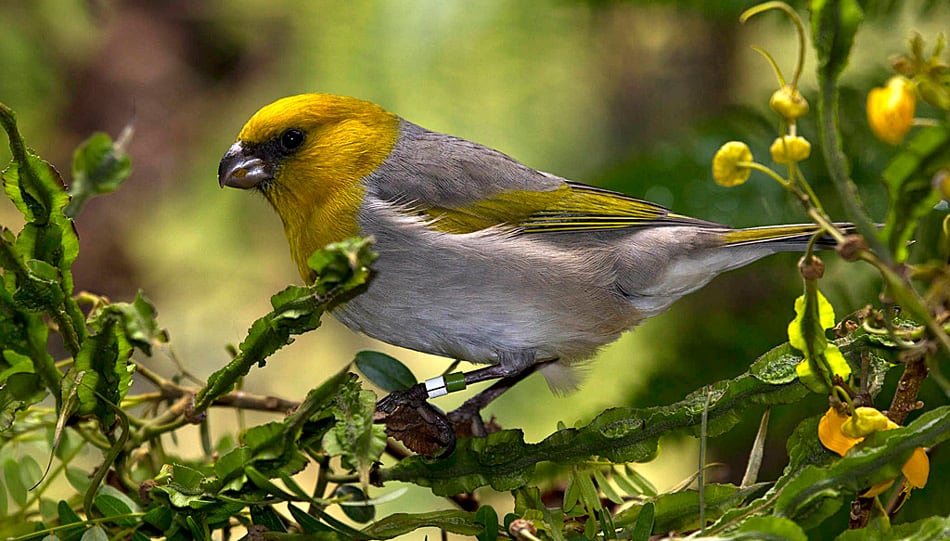Introduction to the Observatories on Mauna Kea
More than 11 countries, non-profit institutions, and scientific cooperatives have established, funded, and maintained 13 telescopes atop Mauna Kea.

The largest mountain in the state of Hawaii, Mauna Kea is unique for several reasons – not the least of which being its unusual and diverse climate. At an elevation of 13,800+ feet above sea level, the summit is arid and dry (there’s a reason a Mars-mission simulation was held there) with occasional snowpack on a seasonal basis. And its position above most atmospheric interference makes it one of the world’s very best sites for astronomical observation and is home to more than 13 telescopes doing just that.
While the mountain’s summit certainly gets the most attention and inspires the most awe, the alpine environment that lies below is home to startlingly unique and ruggedly-beautiful flora and fauna that you can’t find anywhere else.
If you’re hiking through Mauna Kea’s extensive trail system, keep an eye out for the following species and see how many you can find!
Ferns and Shrubs
As one moves toward the summit, the vegetation becomes more sparse and less voluminous, with shrublands making up most of the ground between the treeline and the desert at the summit of the volcano.
Once extremely common throughout the area, you’ll be lucky to see the following now-rare species during your travels: Mauna Kea Silversword or ‘Ahinahina (Argyroxiphium sandwicense), Hawaiian Strawberry (Fragraria chiloensis), alpine tetramolopium (Tetramolopium humile), and more.

Hawaiian-native ferns found throughout the area include bird’s nest ferns (Asplenium adiantum-nigrum), Douglas’ bladderfern (Cystopteris douglasii), Kalamoho (Pellaea ternifolia), ‘Iwa’iwa (Asplenium adiantum-nigrum), and Olali’i (Asplenium trichomanes).
Trees and Native Grasses
Along the more gradual slopes within the treeline, hikers and adventurers to Mauna Kea can enjoy sights of native Mamane (Sophora chrysophylla) trees with two native grasses below and between: alpine hairgrass (Deschampsia nubigena) and pili uka (Trisetum glomeratum) as well as a non-native species in Nassella cernua.
Lichens
While not technically plants, lichens are found throughout the summit of Mauna Kea, with the highest concentration being along lava rocks largely protected against direct sunlight. More than 21 species of lichens can be found on Mauna Kea, with half being endemic to the state. Two lichen species, Pseudephebe pubescens and Umbilicaria pacifica are found only on Mauna Kea.
Very few animal species can survive in the alpine and subalpine conditions present on Mauna Kea. You will primarily find arthropods (insects and spiders), birds, and bats.

Birds
You can find several native Hawaiian bird species on Mauna Kea such as the Palila, ‘Amakihi, ‘Apapane, ‘Elepaio, ‘Akiapola‘au, ‘I‘iwi, and the Hawaiian petrel or ‘Ua‘u. Birds on Mauna Kea tend to live in the Māmane woodlands or the alpine shrublands where they feed on seeds, nectar, and insects.
Bats
The Hawaiian hoary bat (ʻōpeʻapeʻa) is endemic to the Hawaiian Islands and can be found in the Alpine environment of Mauna Kea. You can identify a hoary bat by its frosted appearance, the fur is brown with frosted white on its back. This bat is an endangered species, so be sure not to disturb any bats you come across.
Arthropods
There are 35-40 different species of arthropods that have been identified on Mauna Kea. These include bugs, moths, beetles, spiders, louse, and centipedes. Many of the arthropods are scavengers and predators with very few species that feed exclusively on plants. The scavengers tend to live near cinder cones and close to snow fields, where the plant feeders tend to live in the Māmane woodlands or the alpine shrublands.
How many did you see? The treasures of Mauna Kea are always revealing themselves, so be sure to keep a close eye out on your next expedition to experience the best of the Big Island’s most famous and imposing natural formation.
More than 11 countries, non-profit institutions, and scientific cooperatives have established, funded, and maintained 13 telescopes atop Mauna Kea.
Mauna Kea is the tallest sea mountain in the world, offering unprecedented views of the heavens above. So get ready for some stargazing like you’ve never seen before.
Polynesian Voyaging was a nearly lost art and science that has been revived in recent years